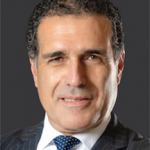Qatar exports most of its LNG to South Korea, Japan, China and India. Most of Qatar’s export markets have carbon-intensive economies where industry contributes, on average, 32% to total GDP. This paper attempts to estimate the reductions in carbon dioxide emissions due to Qatar’s LNG displacing more carbon-intensive fuels in Qatar’s main export markets. LNG emits almost 50% less carbon dioxide than coal and 30% less carbon dioxide than oil products. Therefore, LNG is a cleaner alternative to coal and oil products, particularly in the power sector and industry. Using data from the IEA, EIA and the World Bank, we estimate the reductions in carbon dioxide emissions due to Qatar’s LNG replacing more carbon-intensive fuels in Qatar’s export markets by assuming a hypothetical scenario where Qatar’s LNG disappears from the global energy mix between 2005 and 2020. We estimate an upper bound where all of Qatar’s LNG is replaced by coal and a lower bound where Qatar’s LNG is replaced by all fuels in the energy mix in proportion to their existing shares. Finally, using a stochastic approach, we develop a ‘most likely’ scenario that considers the annual growth rate in coal consumption and the share of coal in the energy mix. The same analysis is conducted for a scenario that projects energy consumption and emissions to 2040. The results of the analysis show that between 2005 and 2020, in the ‘most likely’ scenario, by replacing coal and other carbon-intensive fuels, Qatar’s LNG exports likely reduced global emissions by more than 600 MtCO2. During the same period, these emission reductions amounted to 40% of Qatar’s annual local emissions on average. However, in the future scenario, emission reductions due to Qatar’s LNG exports decrease significantly and the gap between Qatar’s local emissions and how much it offsets by exporting LNG grows over time. This is mainly due to the phase out of coal from global energy systems. We conclude with policy recommendations on how Qatar can close the gap between its local emissions and how much it offsets through LNG exports.
ملخص
تصدر قطر معظم الغاز الطبيعي المسال إلى كوريا الجنوبية واليابان والصين والهند. معظم أسواق التصدير القطرية لديها اقتصادات كثيفة الكربون حيث تساهم الصناعة، في المتوسط، بنسبة 32٪ في إجمالي الناتج المحلي. تحاول هذه الورقة تقدير التخفيضات في انبعاثات ثاني أكسيد الكربون بسبب إزاحة الغاز الطبيعي المسال في قطر لمزيد من الوقود كثيف الكربون في أسواق التصدير الرئيسية في قطر. ينبعث من الغاز الطبيعي المسال ما يقرب من 50٪ أقل من ثاني أكسيد الكربون من الفحم و 30٪ أقل من ثاني أكسيد الكربون من المنتجات الزيتية. لذلك، فإن الغاز الطبيعي المسال هو بديل أنظف للفحم ومنتجات النفط، لا سيما في قطاع الطاقة والصناعة. باستخدام بيانات من وكالة الطاقة الدولية وإدارة معلومات الطاقة والبنك الدولي، نقدر التخفيضات في انبعاثات ثاني أكسيد الكربون بسبب استبدال الغاز الطبيعي المسال في قطر للوقود الأكثر كثافة للكربون في أسواق التصدير القطرية من خلال افتراض سيناريو افتراضي حيث يختفي الغاز الطبيعي المسال في قطر من مزيج الطاقة العالمي بين 2005 و 2020. نقدر الحد الأعلى حيث يتم استبدال جميع الغاز الطبيعي المسال في قطر بالفحم والحد الأدنى حيث يتم استبدال الغاز الطبيعي المسال في قطر بجميع أنواع الوقود في مزيج الطاقة بما يتناسب مع أسهمها الحالية. أخيرًا، باستخدام نهج عشوائي، نطور سيناريو «على الأرجح» يأخذ في الاعتبار معدل النمو السنوي في استهلاك الفحم وحصة الفحم في مزيج الطاقة. يتم إجراء نفس التحليل لسيناريو يتوقع استهلاك الطاقة والانبعاثات حتى عام 2040. تظهر نتائج التحليل أنه بين عامي 2005 و 2020، في السيناريو «الأكثر ترجيحًا»، من خلال استبدال الفحم وأنواع الوقود الأخرى كثيفة الكربون، من المحتمل أن تخفض صادرات قطر من الغاز الطبيعي المسال الانبعاثات العالمية بأكثر من 600 MtCO2. خلال نفس الفترة، بلغت تخفيضات الانبعاثات هذه 40٪ من الانبعاثات المحلية السنوية لقطر في المتوسط. ومع ذلك، في السيناريو المستقبلي، تنخفض تخفيضات الانبعاثات بسبب صادرات قطر من الغاز الطبيعي المسال بشكل كبير وتنمو الفجوة بين الانبعاثات المحلية لقطر ومقدار تعويضها عن طريق تصدير الغاز الطبيعي المسال بمرور الوقت. ويرجع ذلك أساسًا إلى التخلص التدريجي من الفحم من أنظمة الطاقة العالمية. نختتم بتوصيات سياسية حول كيفية سد قطر للفجوة بين انبعاثاتها المحلية ومقدار تعويضها من خلال صادرات الغاز الطبيعي المسال.

Speakers
Muez Ali
Research and Policy Lead at Earthna, Center...

Authors
Abdalftah Hamid
Junior Visiting Fellow, Middle East Council on...

Authors
Gonzalo Castro de la Mata
Executive Director of Earthna: Center for a...

Authors
Alex Amato
Sustainability and Research Advisor, Earthna, Qatar


